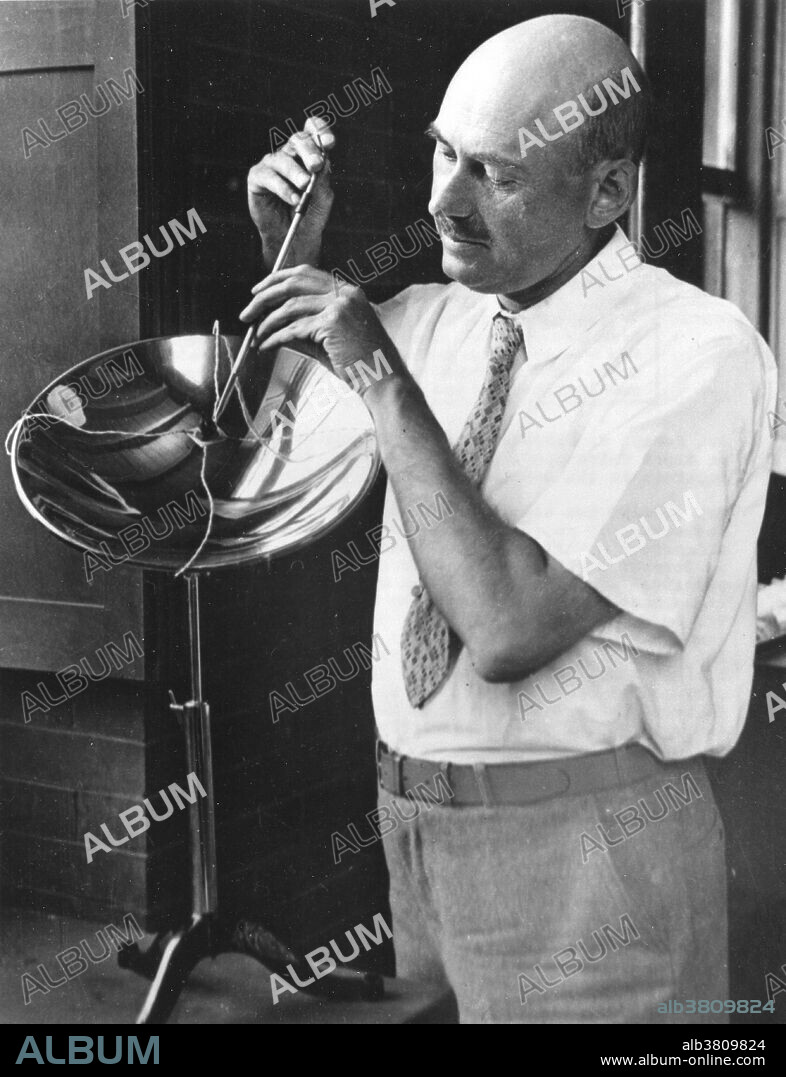alb3809824
Robert Goddard, American Rocket Scientist

|
Añadir a otro lightbox |
|
Añadir a otro lightbox |



¿Ya tienes cuenta? Iniciar sesión
¿No tienes cuenta? Regístrate
Compra esta imagen.
Selecciona el uso:

Título:
Robert Goddard, American Rocket Scientist
Descripción:
Ver traducción automática
Goddard with his apparatus for solar energy study at Clark University, Worcester, Massachusetts, circa early 1930's. Robert Hutchings Goddard (October 5, 1882 - August 10, 1945) has been recognized as the father of American rocketry and as one of the pioneers in the theoretical exploration of space. He was theoretical scientist as well as a practical engineer. He is credited with creating and building the world's first liquid-fueled rocket. His dream was the conquest of the upper atmosphere and ultimately space through the use of rocket propulsion. He died in 1945, but was probably as responsible for the dawning of the Space Age as the Wrights were for the beginning of the Air Age. Yet his work attracted little serious attention during his lifetime. However, when the United States began to prepare for the conquest of space in the 1950's, American rocket scientists began to recognize the debt owed to the New England professor. They discovered that it was virtually impossible to construct a rocket or launch a satellite without acknowledging the work of Dr. Goddard. More than 200 patents, many of which were issued after his death, covered this great legacy.
Crédito:
Album / Science Source / NASA Goddard Space Flight Center
Autorizaciones:
Tamaño imagen:
3600 x 4689 px | 48.3 MB
Tamaño impresión:
30.5 x 39.7 cm | 12.0 x 15.6 in (300 dpi)
Palabras clave:
1930S • AMERICANO • BLANCO Y NEGRO • CIENCIA • EQUIPAMIENTO • EQUIPO • ESTADOS UNIDOS DE AMERICA • ESTADOS UNIDOS • FAMOSA • FAMOSO • FIGURA • FÍSICA (CIENCIA) • FÍSICO (CIENTIFICO) • FOTO • FOTOGRAFIA • GENTE • HISTORIA • HISTORICO • HOMBRE • HOMBRES • IMPORTANTE • INSTRUMENTO • INVENCION • INVENTOR • MASCULINO • MASSACHUSETTS • PERSONA • PERSONALIDAD • PERSONALIDADES • PIONERO • PORTRAIT • RETRATO DE HOMBRE • RETRATO • S. XX • SIGLO XX • TECNOLOGÍA • TECNOLÓGICA
 Pinterest
Pinterest Twitter
Twitter Facebook
Facebook Copiar enlace
Copiar enlace Email
Email
